Abstract
1. In cheek pouch preparations of anaesthetized hamsters, platelet thrombi or `white bodies' were produced in venules by the micro-ionto-phoretic application of adenosine diphosphate (ADP). Currents of 10-400nA were passed through micropipettes containing 10 mM-ADP, the tips of which were less than 5 μ from the outer wall of the venule. The effect was quantitated by determining the time between starting the currents and the first appearance of platelets adhering inside the venule opposite the tip of the micropipette.
2. Repeated applications of ADP to the same site on a venule caused the appearance of white bodies after intervals which were almost constant for up to 3 hr.
3. The time to first appearance of a white body was inversely related to the iontophoretic current between about 10 and 200 nA. Currents smaller than 10 nA had no effect on the platelets. With currents of 200 nA or more the time remained at a minimum of less than 20 sec.
4. With currents of about 300 nA the minimum time increased little as the pipette tip was withdrawn up to 20 μ from the venule; with greater distances the time increased progressively.
5. Histamine caused gaps to appear between endothelial cells in cheek pouch venules. Histamine at a concentration of 10 mM in micropipettes was applied iontophoretically by currents of 300 nA to venules at the same sites as ADP. Histamine alone had no effect on circulating platelets. When applied before and together with ADP, histamine decreased the time to first appearance of white bodies by up to 40% below that determined with ADP alone. Iontophoretically applied histamine did not alter the mean blood flow velocity in the venules.
6. After stopping the application of histamine, the time to first appearance of white bodies produced by ADP increased again in about 5 min to the control values.
7. Bradykinin, which does not cause endothelial gaps in cheek pouch venules, did not accelerate the induction of white bodies like histamine.
8. There were no microscopic abnormalities in venules in which white bodies had formed. Venules exposed to histamine accumulated circulating carbon particles in discrete wall areas.
9. It is concluded that adhering white bodies can be induced repeatedly in normal venules by direct action of externally applied ADP on circulating platelets and that the accelerating effect of histamine on white body formation is due to the separation of endothelial cells which accelerates the inward diffusion of ADP.
Full text
PDF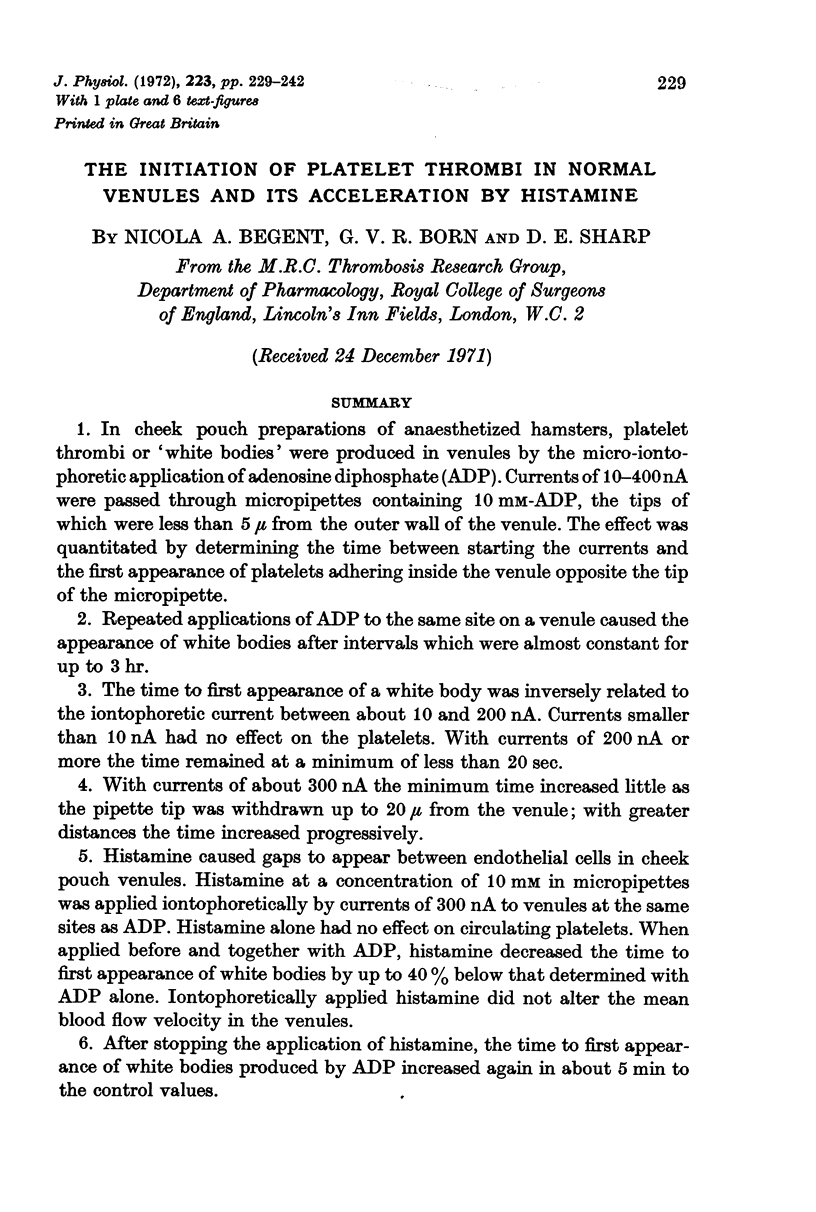

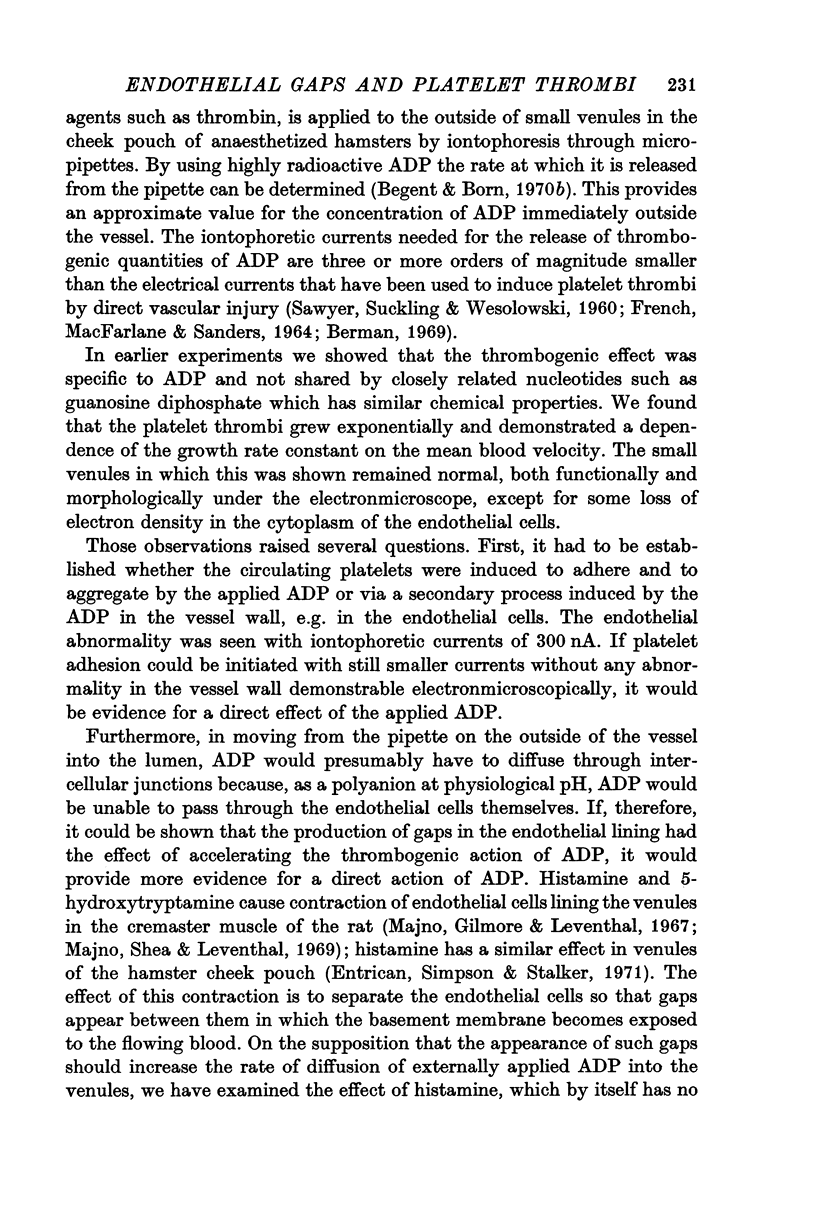

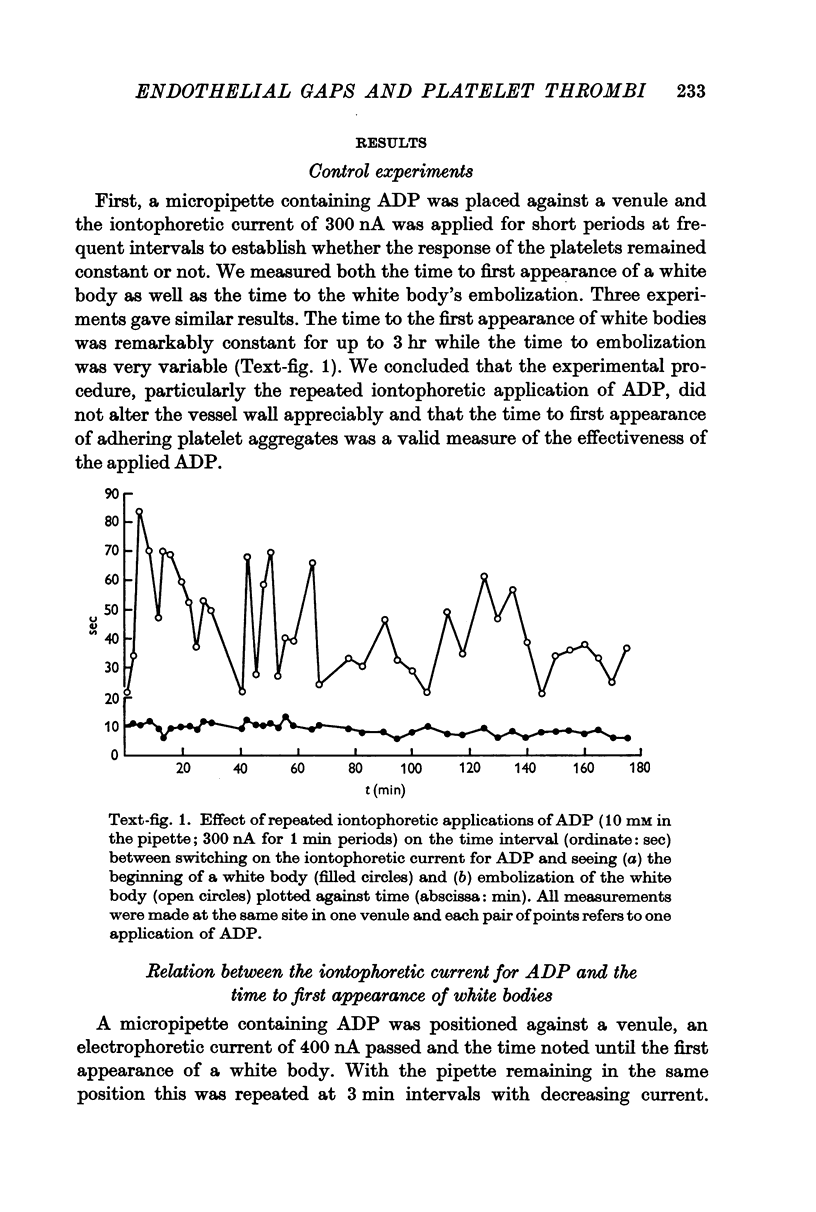
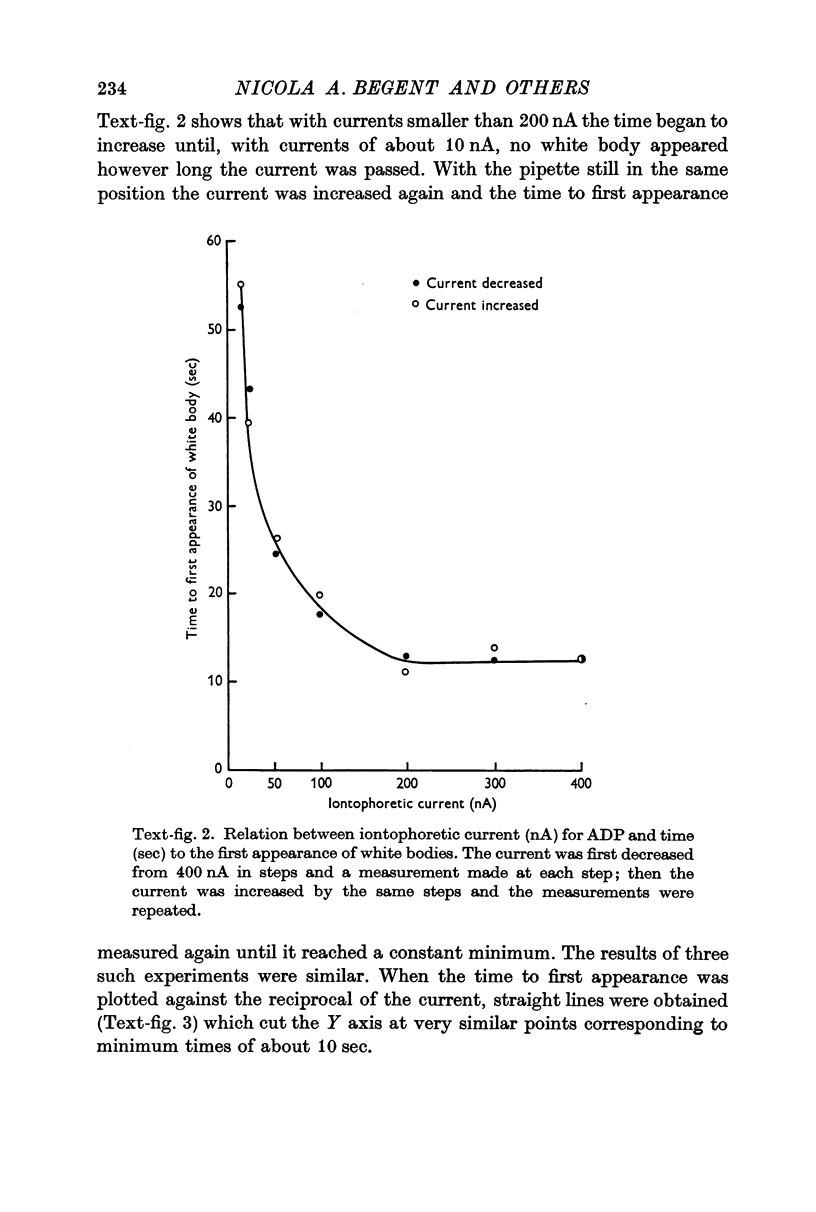
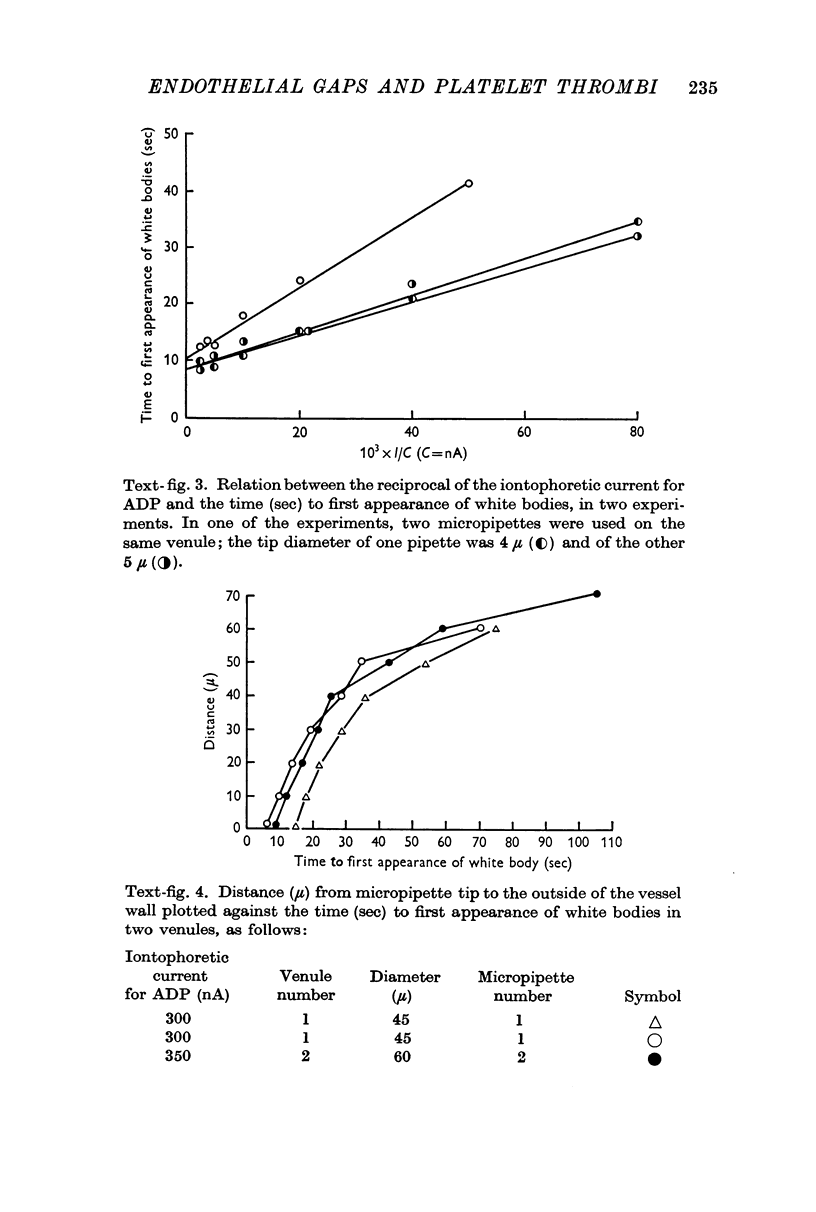


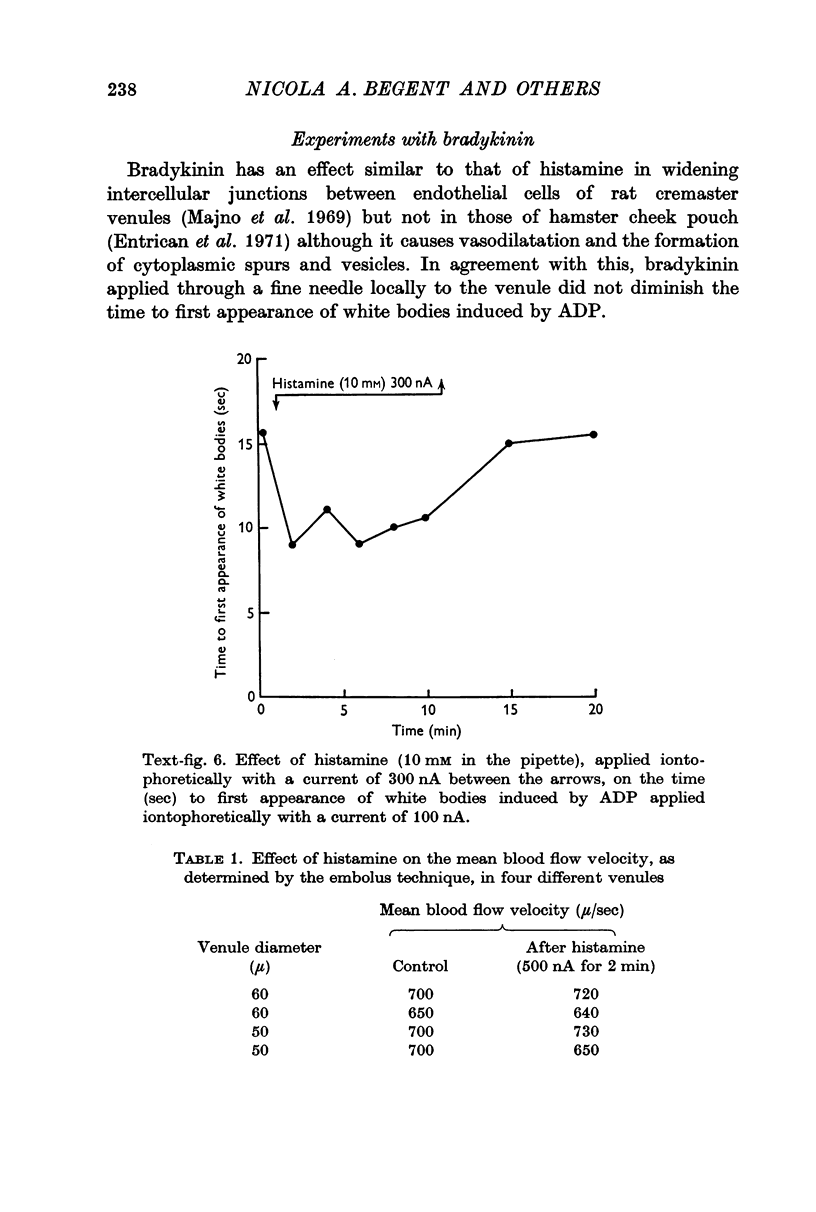

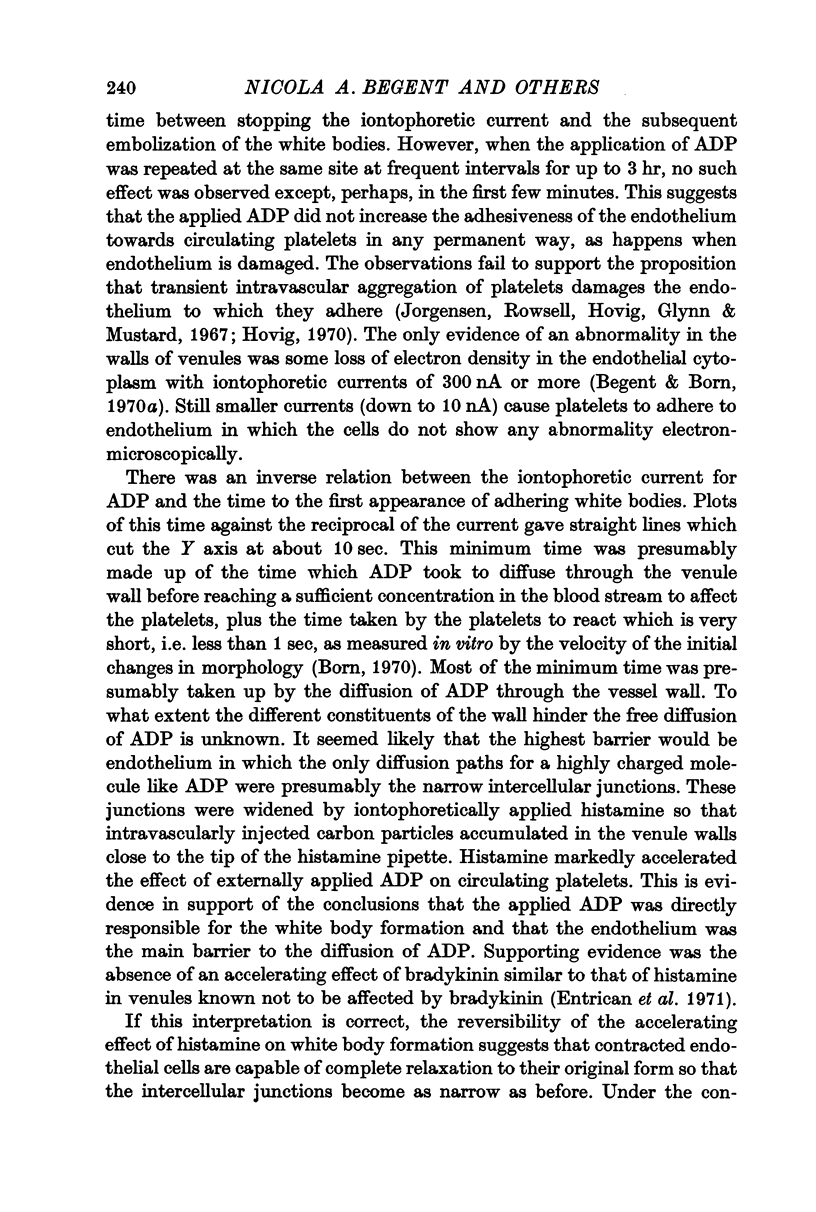
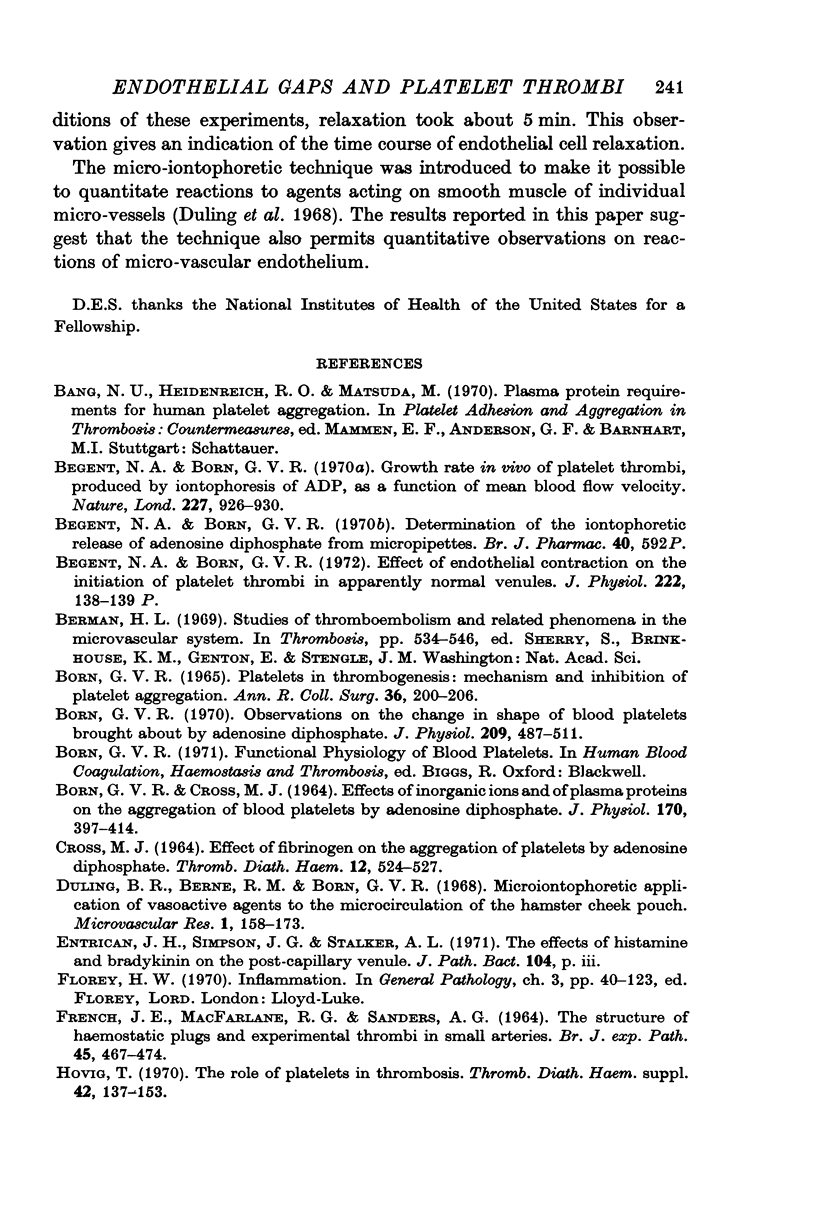
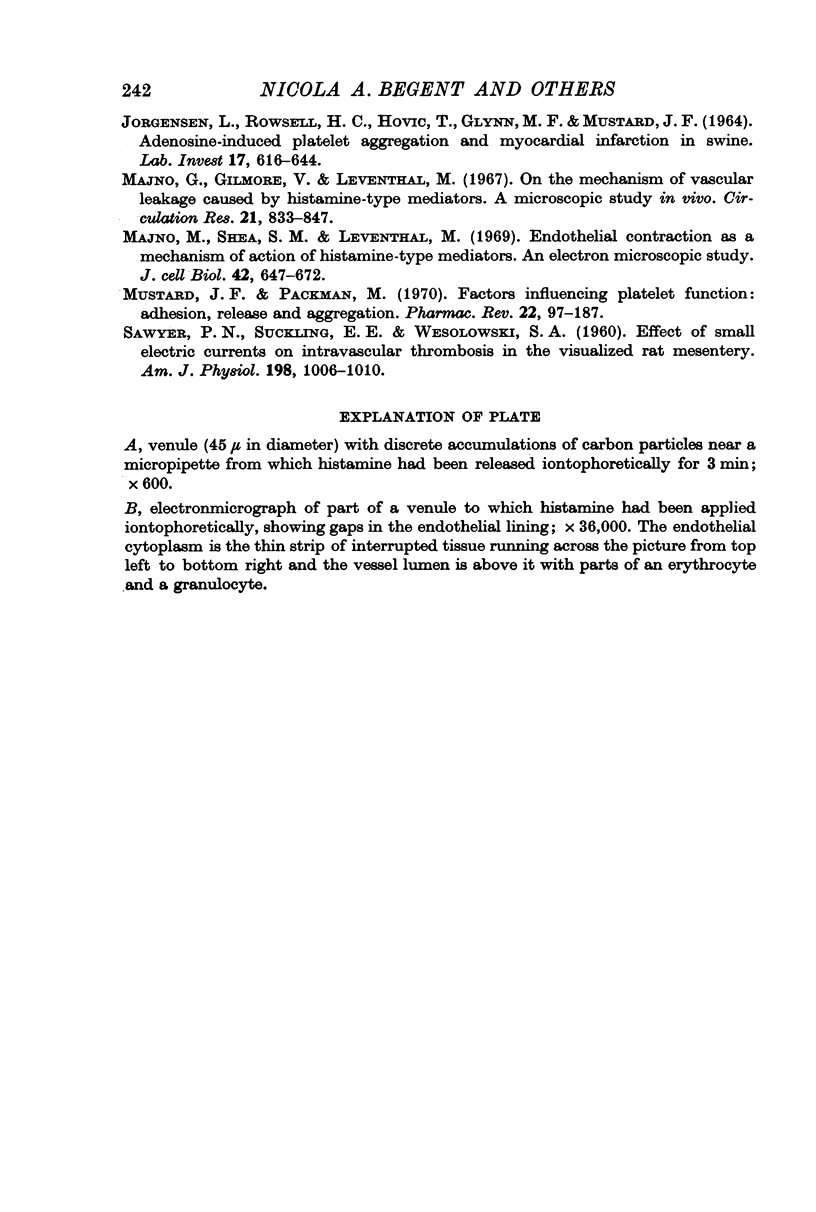

Images in this article
Selected References
These references are in PubMed. This may not be the complete list of references from this article.
- BORN G. V., CROSS M. J. EFFECTS OF INORGANIC IONS AND OF PLASMA PROTEINS ON THE AGGREGATION OF BLOOD PLATELETS BY ADENOSINE DIPHOSPHATE. J Physiol. 1964 Mar;170:397–414. doi: 10.1113/jphysiol.1964.sp007340. [DOI] [PMC free article] [PubMed] [Google Scholar]
- BORN G. V. PLATELETS IN THROMBOGENESIS: MECHANISM AND INHIBITION OF PLATELET AGGREGATION. Ann R Coll Surg Engl. 1965 Apr;36:200–206. [PMC free article] [PubMed] [Google Scholar]
- Begent N., Born G. V. Determination of the iontophoretic release of adenosine diphosphate from micropipettes. Br J Pharmacol. 1970 Nov;40(3):592P–593P. [PMC free article] [PubMed] [Google Scholar]
- Begent N., Born G. V. Growth rate in vivo of platelet thrombi, produced by iontophoresis of ADP, as a function of mean blood flow velocity. Nature. 1970 Aug 29;227(5261):926–930. doi: 10.1038/227926a0. [DOI] [PubMed] [Google Scholar]
- Born G. V. Observations on the change in shape of blood platelets brought about by adenosine diphosphate. J Physiol. 1970 Aug;209(2):487–511. doi: 10.1113/jphysiol.1970.sp009176. [DOI] [PMC free article] [PubMed] [Google Scholar]
- CROSS M. J. EFFECT OF FIBRINOGEN ON THE AGGREGATION OF PLATELETS BY ADENOSINE DIPHOSPHATE. Thromb Diath Haemorrh. 1964 Dec 31;12:524–527. [PubMed] [Google Scholar]
- FRENCH J. E., MACFARLANE R. G., SANDERS A. G. THE STRUCTURE OF HAEMOSTATIC PLUGS AND EXPERIMENTAL THROMBI IN SMALL ARTERIES. Br J Exp Pathol. 1964 Oct;45:467–474. [PMC free article] [PubMed] [Google Scholar]
- Jorgensen L., Rowsell H. C., Hovig T., Glynn M. F., Mustard J. F. Adenosine diphosphate-induced platelet aggregation and myocardial infarction in swine. Lab Invest. 1967 Dec;17(6):616–644. [PubMed] [Google Scholar]
- Majno G., Gilmore V., Leventhal M. On the mechanism of vascular leakage caused by histaminetype mediators. A microscopic study in vivo. Circ Res. 1967 Dec;21(6):833–847. doi: 10.1161/01.res.21.6.833. [DOI] [PubMed] [Google Scholar]
- Majno G., Shea S. M., Leventhal M. Endothelial contraction induced by histamine-type mediators: an electron microscopic study. J Cell Biol. 1969 Sep;42(3):647–672. doi: 10.1083/jcb.42.3.647. [DOI] [PMC free article] [PubMed] [Google Scholar]
- Mustard J. F., Packham M. A. Factors influencing platelet function: adhesion, release, and aggregation. Pharmacol Rev. 1970 Jun;22(2):97–187. [PubMed] [Google Scholar]
- SAWYER P. N., SUCKLING E. E., WESOLOWSKI S. A. Effect of small electric currents on intravascular thrombosis in the visualized rat mesentery. Am J Physiol. 1960 May;198:1006–1010. doi: 10.1152/ajplegacy.1960.198.5.1006. [DOI] [PubMed] [Google Scholar]




